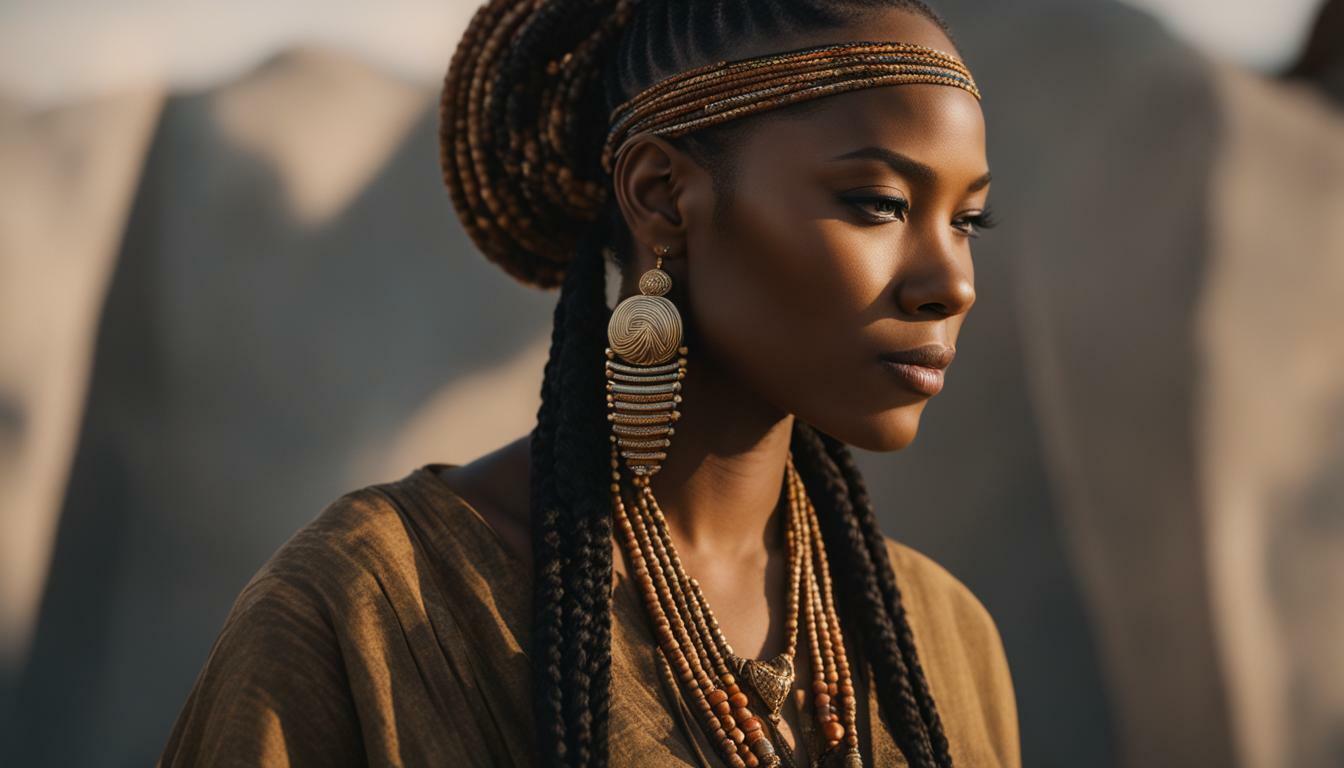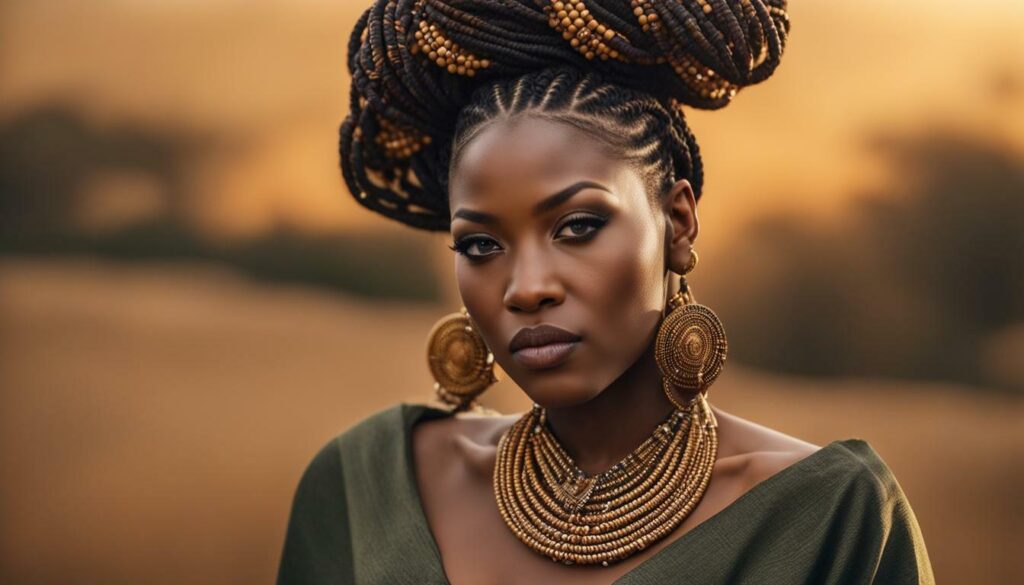
Fulani braids and tribal braids are two distinct styles of braiding that have their own unique characteristics and cultural backgrounds. Fulani braids, named after the Fulani people of Africa, are known for their thick and versatile braids that can be braided all the way through the head or have some strands left out. On the other hand, tribal braids derive their name from their resemblance to braids worn by indigenous peoples around the world. Tribal braids are typically thinner and can be worn in various styles.
While both styles are beautiful, Fulani braids tend to be thicker and more dramatic, while tribal braids are more understated. Fulani braids are a reflection of the cultural hair traditions of the Fulani tribe and hold a significant place in African hair traditions. They have evolved over time and continue to make an impact in contemporary culture.
- Fulani braids and tribal braids are two distinct styles of braiding with their own unique characteristics and cultural backgrounds.
- Fulani braids are named after the Fulani people of Africa and are known for their thick and versatile braids.
- Tribal braids resemble braids worn by indigenous peoples around the world and tend to be thinner.
- Fulani braids have a rich history and cultural significance within the Fulani tribe and African hair traditions.
- Understanding the differences between these two styles allows for a deeper appreciation of the beauty and versatility of braided hairstyles.
The History and Cultural Significance of Fulani Braids
Fulani braids have a rich history and cultural significance that can be traced back to the Fulani tribe in Africa. This traditional hairstyle, also known as “foula braids” or “peul braids,” is deeply rooted in the cultural identity of the Fulani people, who are primarily nomadic herders across West Africa.
The Fulani tribe is known for their elaborate and intricate braiding techniques, which have been passed down through generations as a way to express their cultural heritage. Fulani braids are characterized by their thick and versatile nature, offering a range of styling options. The braids can be braided all the way through the head or have some strands left out for a more intricate look.
“Fulani braids are a symbol of beauty, cultural pride, and identity within the Fulani community.”
For the Fulani people, braiding is not just a hairstyle but a form of art and self-expression. It is a way for them to showcase their identity and heritage, as well as their social status. The elaborate braiding patterns often incorporate elements of their nomadic lifestyle, such as cowrie shells, beads, and even coins. These embellishments serve as symbols of wealth and prosperity within the community.
The Versatility of Fulani Braids
Fulani braids offer versatility in terms of styling options. They can be worn in various ways, including ponytails, updos, or even loose and flowing. This adaptability has made Fulani braids popular not only within the Fulani community but also globally.
It is important to note that while Fulani braids have gained popularity outside of Africa, they still hold deep cultural significance to the Fulani people. The style represents their cultural heritage, traditions, and identity. When wearing Fulani braids, it is essential to respect the origins and cultural context of the hairstyle.

In conclusion, understanding the history and cultural significance of Fulani braids allows us to appreciate the artistry and heritage behind this beautiful hairstyle. It is a testament to the richness and diversity of African hair traditions, and a reflection of the Fulani people’s pride in their cultural heritage.
Conclusion
In summary, Fulani braids offer a glimpse into the diverse world of African hair traditions and showcase the creativity and cultural identity of the Fulani tribe. Named after the Fulani people of Africa, these braids are characterized by their thick and versatile nature. They can be braided all the way through the head or have some strands left out, allowing for various styling options.
On the other hand, tribal braids derive their name from their resemblance to braids worn by indigenous peoples across the globe. These braids are typically thinner than Fulani braids and can be styled in different ways. While both styles are beautiful, Fulani braids tend to be more dramatic, with their thicker appearance, while tribal braids have a more understated charm.
Both Fulani braids and tribal braids can be worn in ponytails and can last for up to four weeks with proper care. These braiding styles not only serve as a form of artistic expression but also provide a connection to cultural heritage and identity. Whether it’s the intricate history and cultural significance of Fulani braids or the global influence of tribal braids, these hairstyles exemplify the beauty and versatility of African hair traditions.
FAQ
Are Fulani braids tribal?
Fulani braids are not necessarily tribal in nature. They are a specific hairstyle associated with the Fulani people of Africa and have their own unique characteristics and cultural contexts. While they share some similarities with tribal hairstyles, they are distinct in their own right.
What is the history and cultural significance of Fulani braids?
Fulani braids have a rich history and cultural significance. They originated within the Fulani tribe in Africa and have been a part of African hair traditions for centuries. This hairstyle represents cultural identity, beauty, and heritage within the Fulani community.
How do Fulani braids compare to tribal hairstyles from other cultures?
Fulani braids may share some similarities with tribal hairstyles from different cultures around the world. However, each culture and tribe has its own unique braiding techniques, styles, and cultural meanings. While both Fulani braids and tribal hairstyles are beautiful, they should be appreciated and understood within their respective cultural contexts.
How long can Fulani braids last?
With proper care, Fulani braids can typically last up to four weeks. It is important to keep the scalp and hair moisturized, avoid excessive pulling or tugging, and protect the braids while sleeping to maintain their longevity.
Can Fulani braids be worn in different styles?
Yes, Fulani braids are versatile and can be worn in various styles. They can be braided all the way through the head or have some strands left out for added texture. Additionally, Fulani braids can be styled into ponytails, buns, or other updos for different looks.






